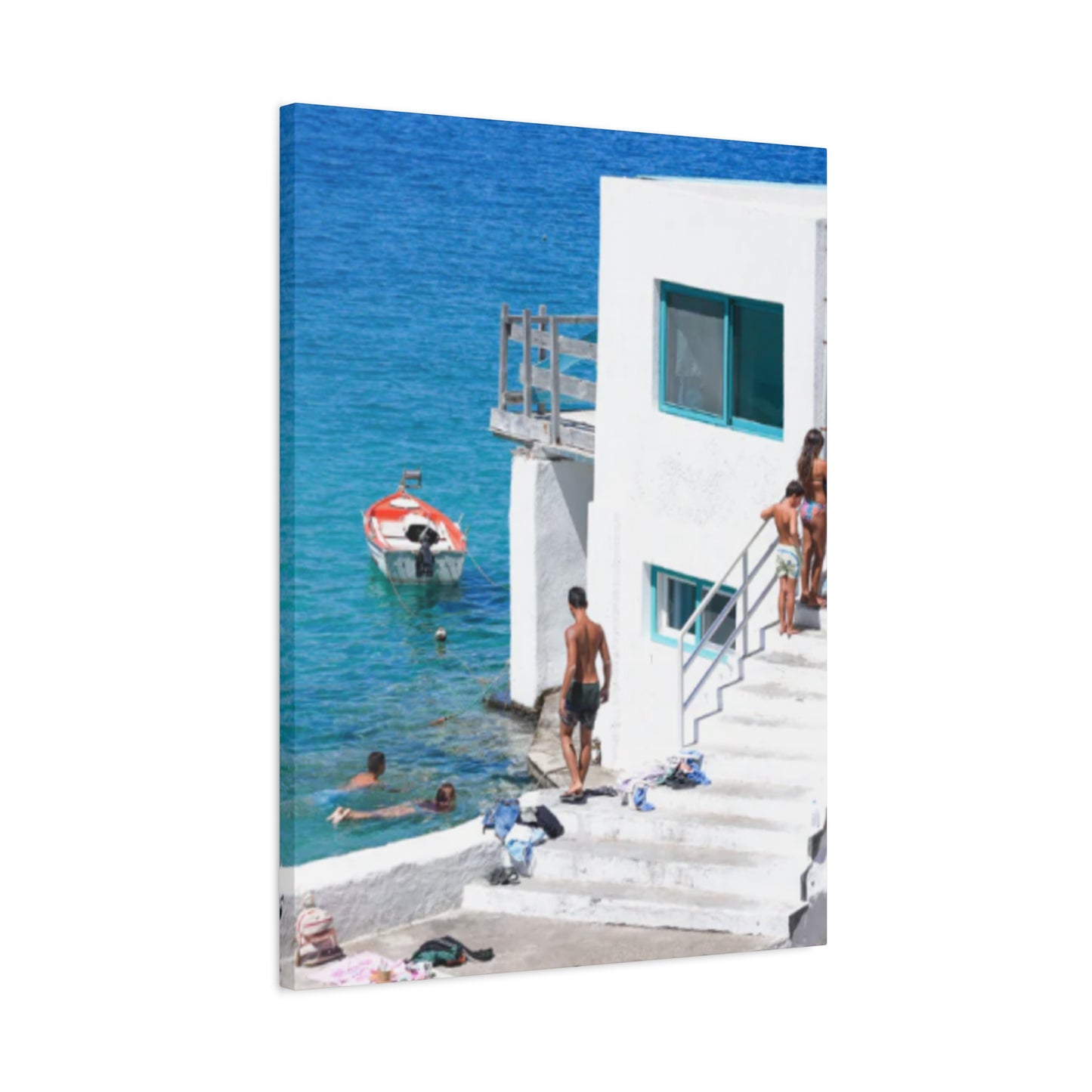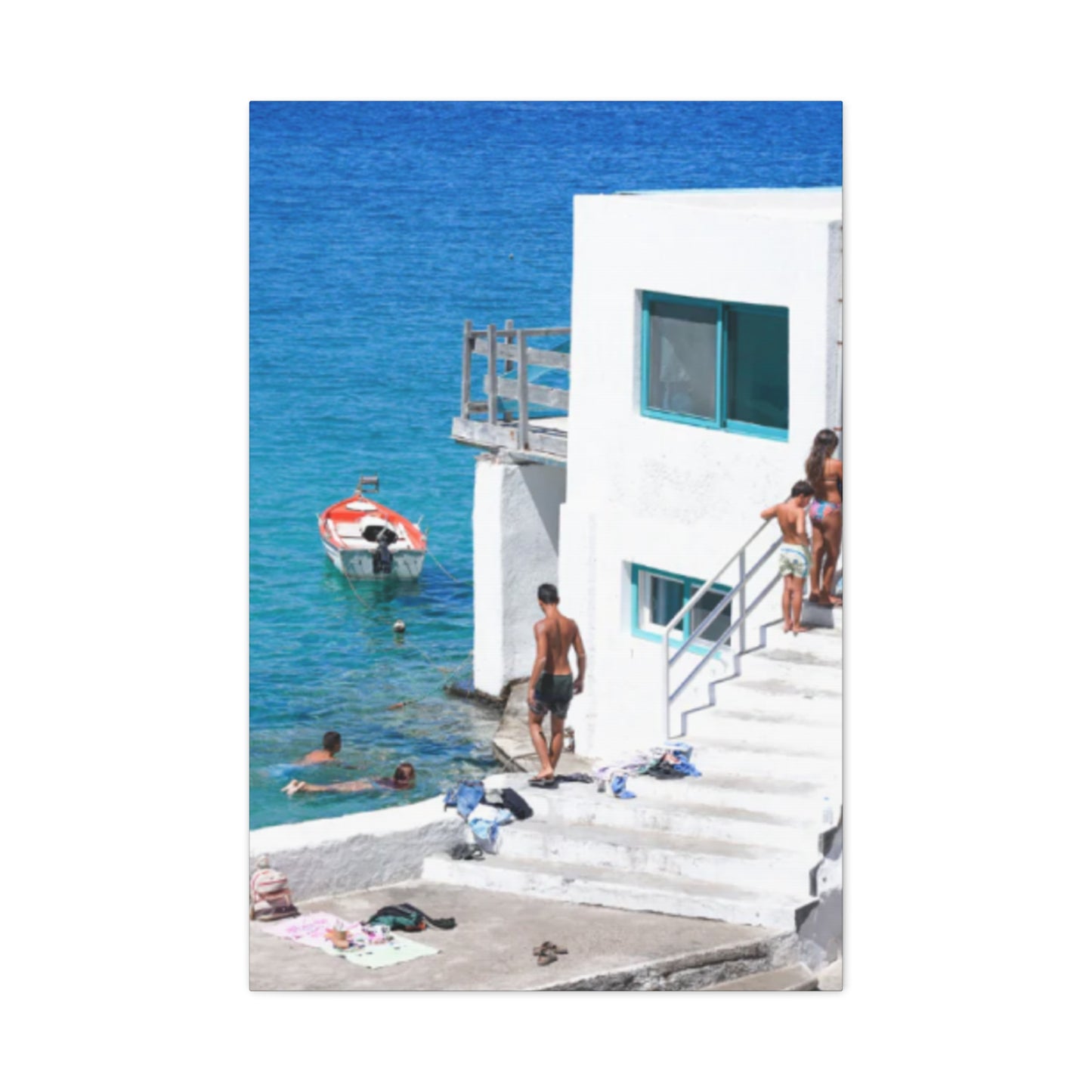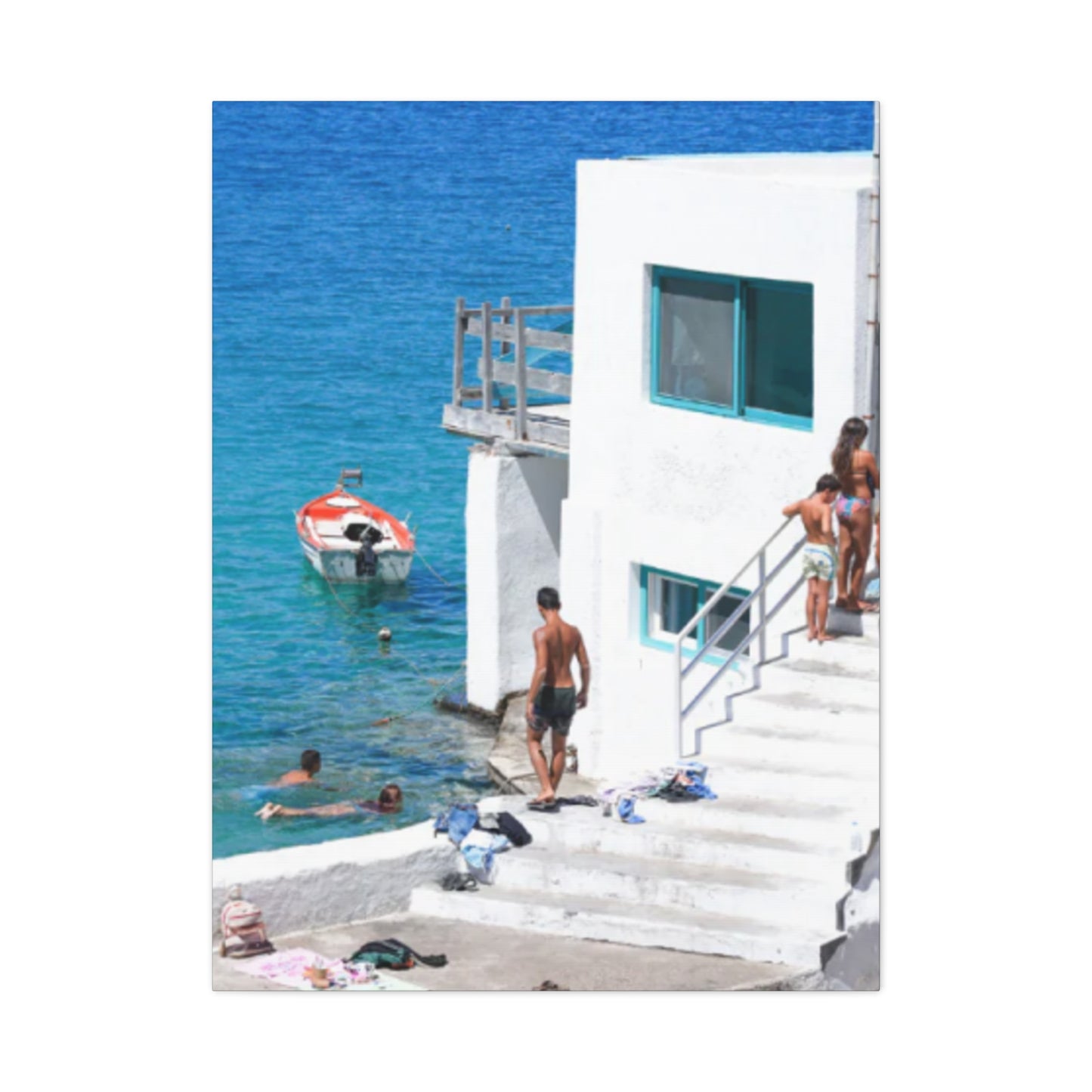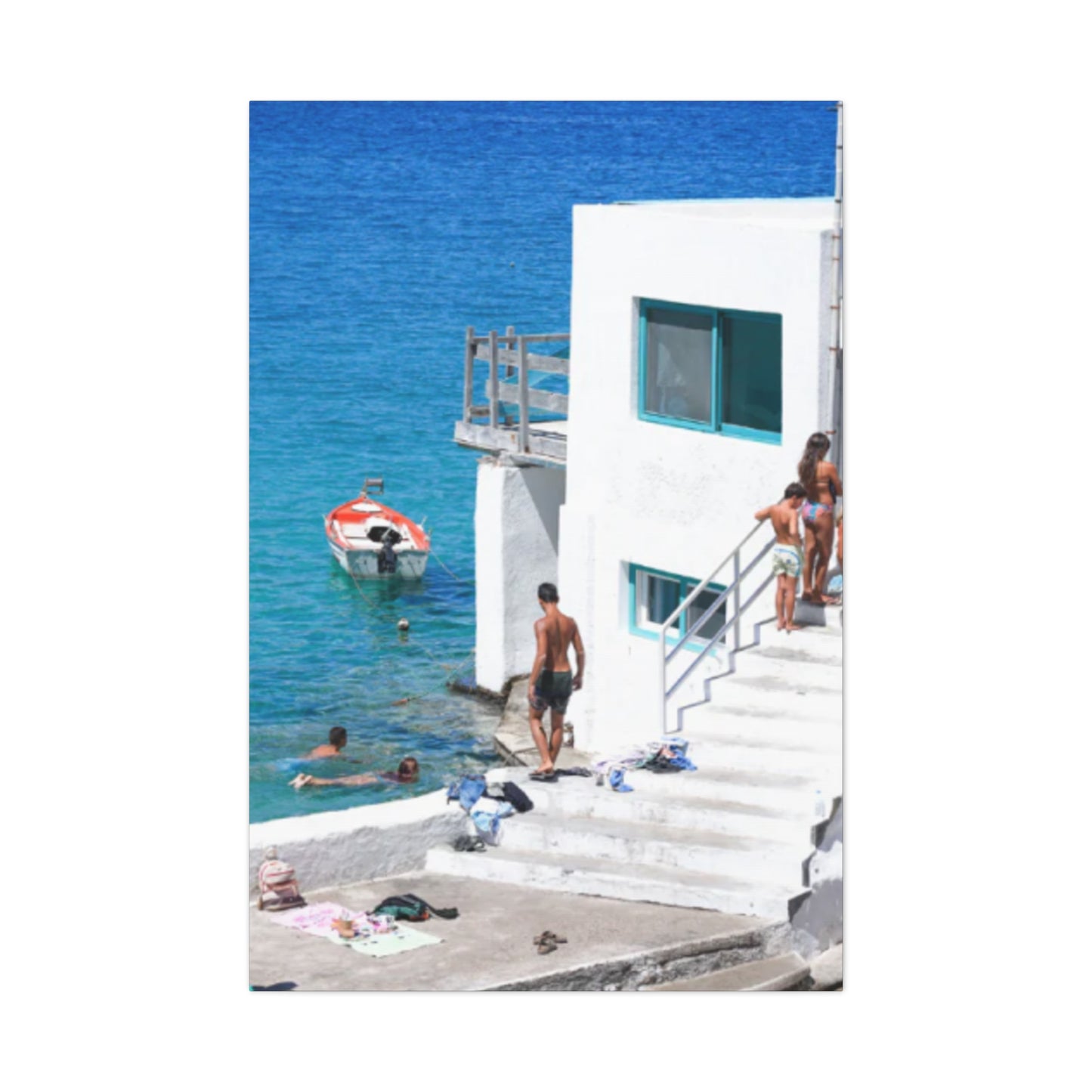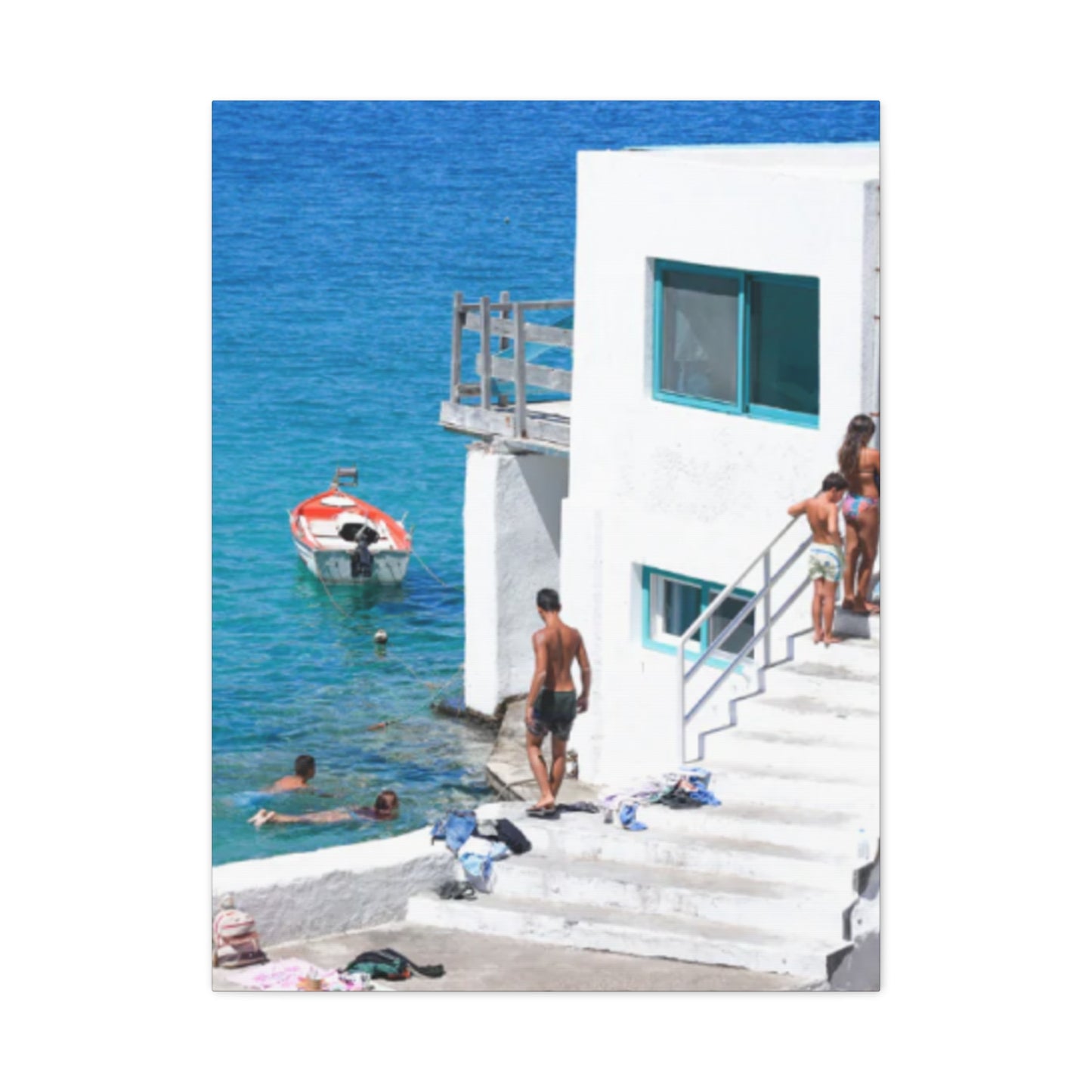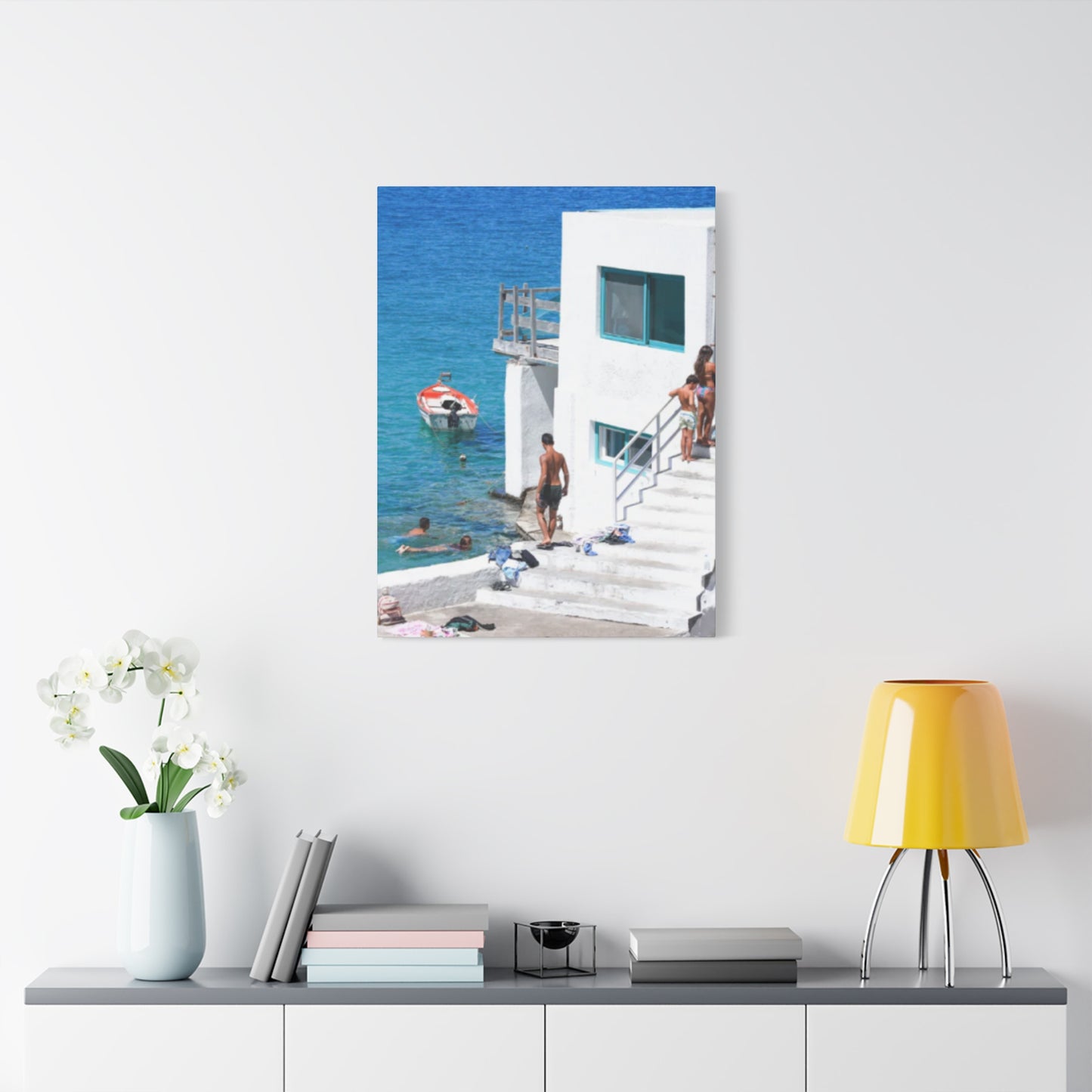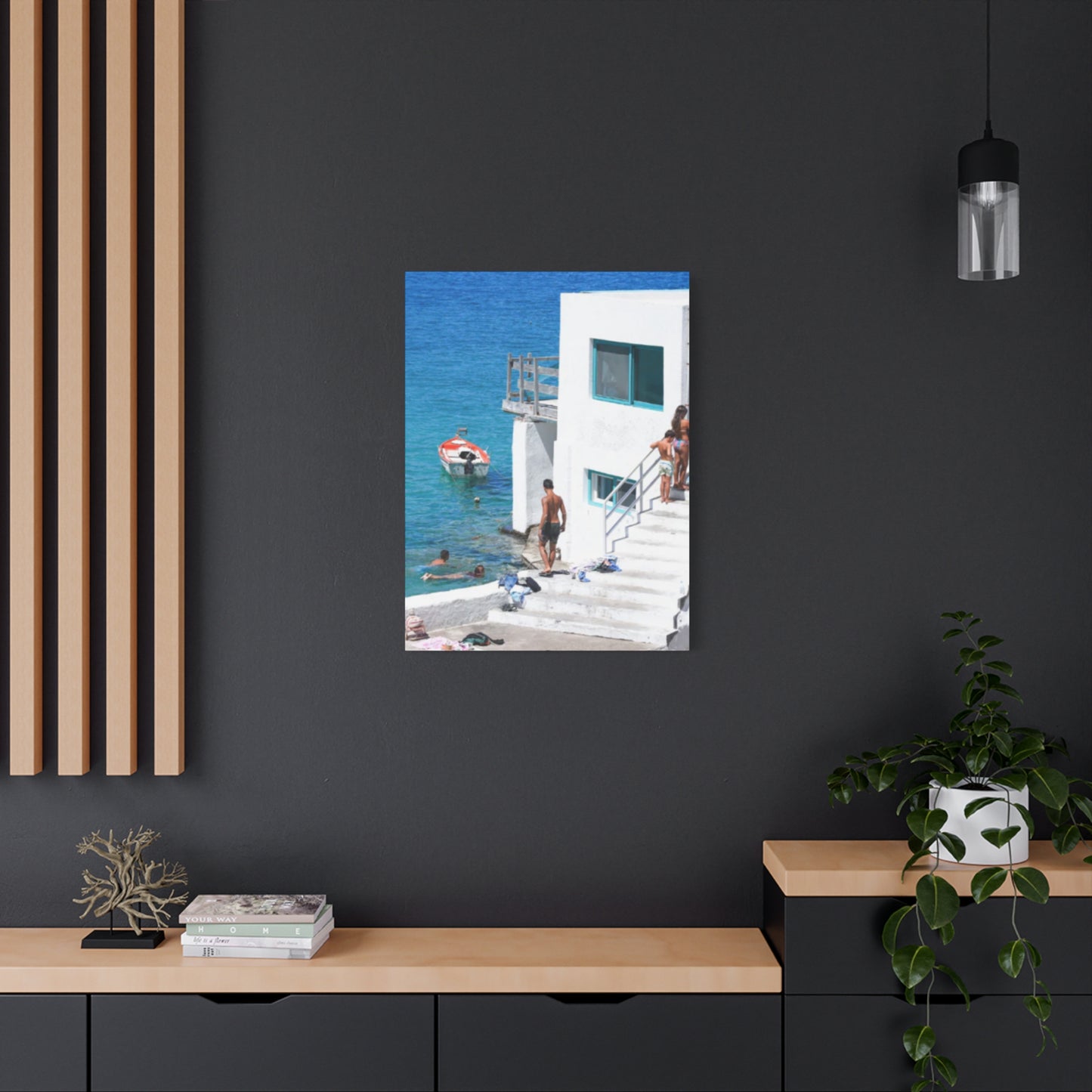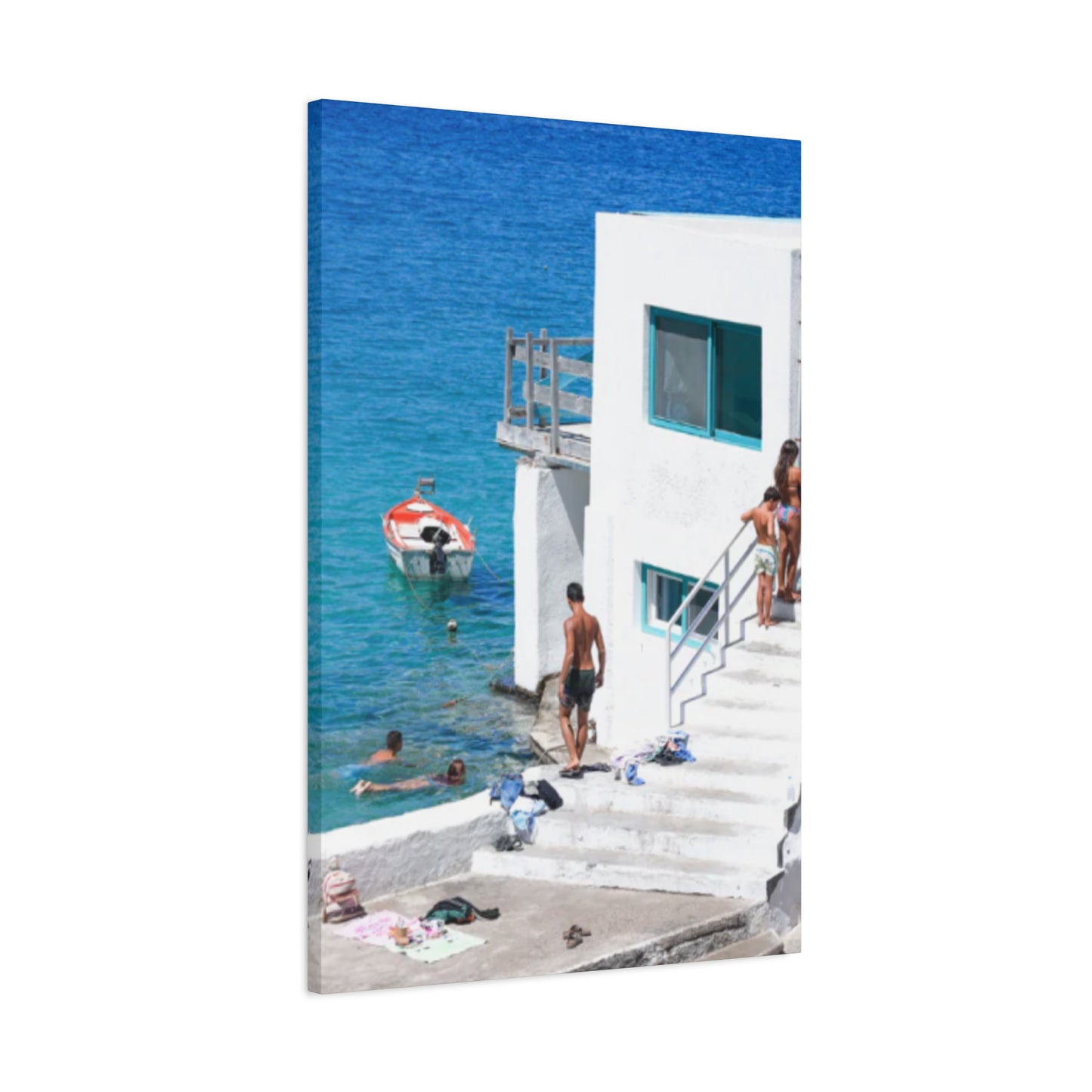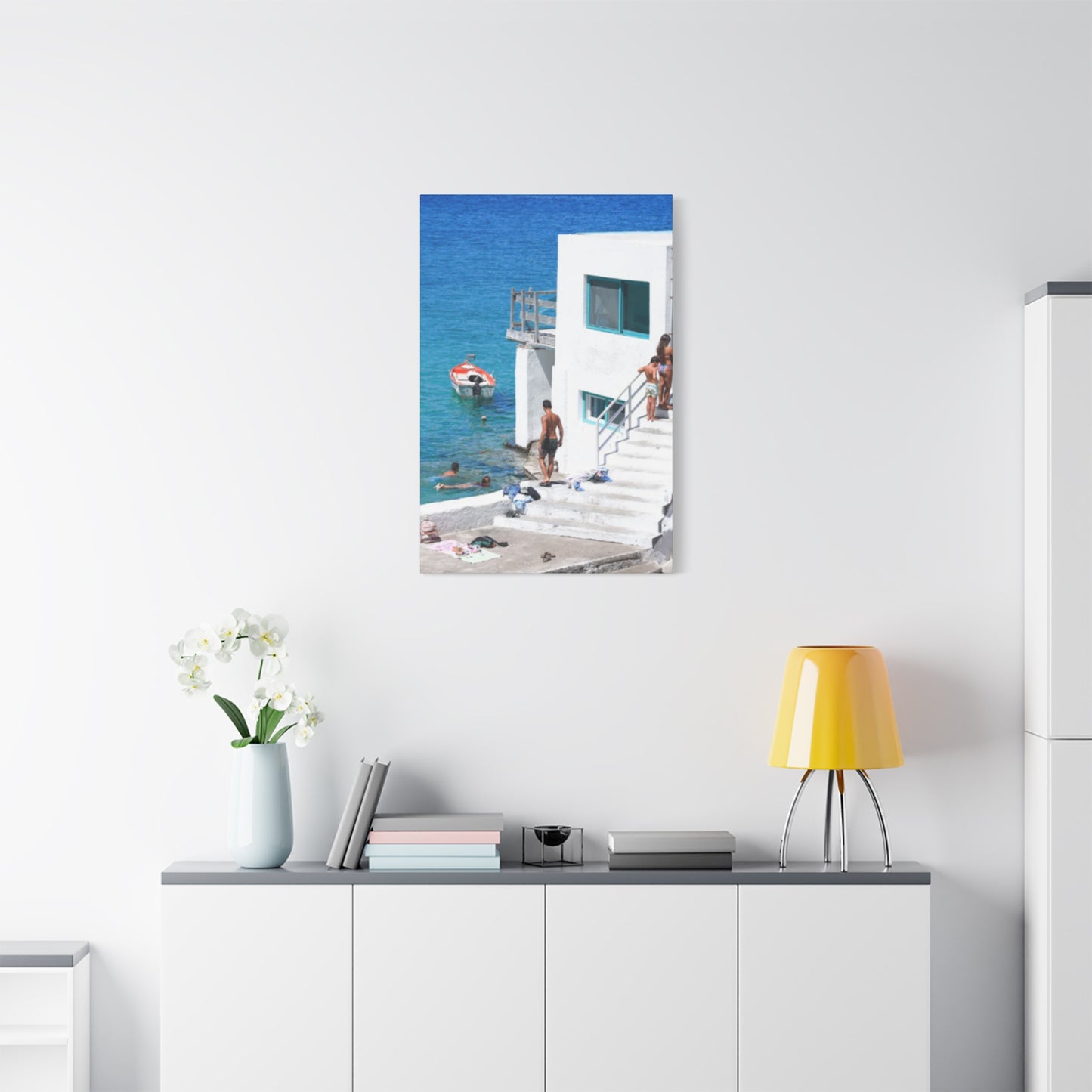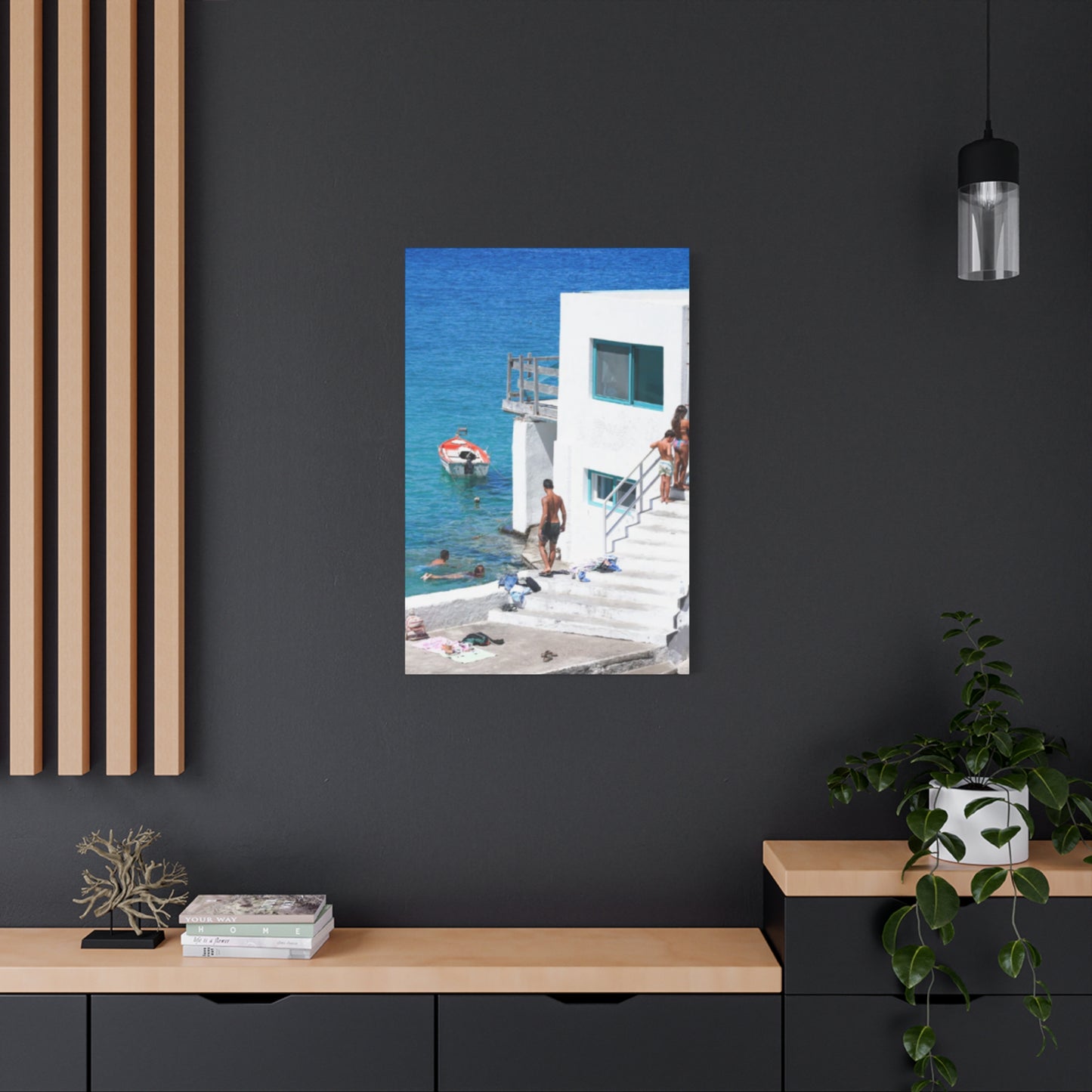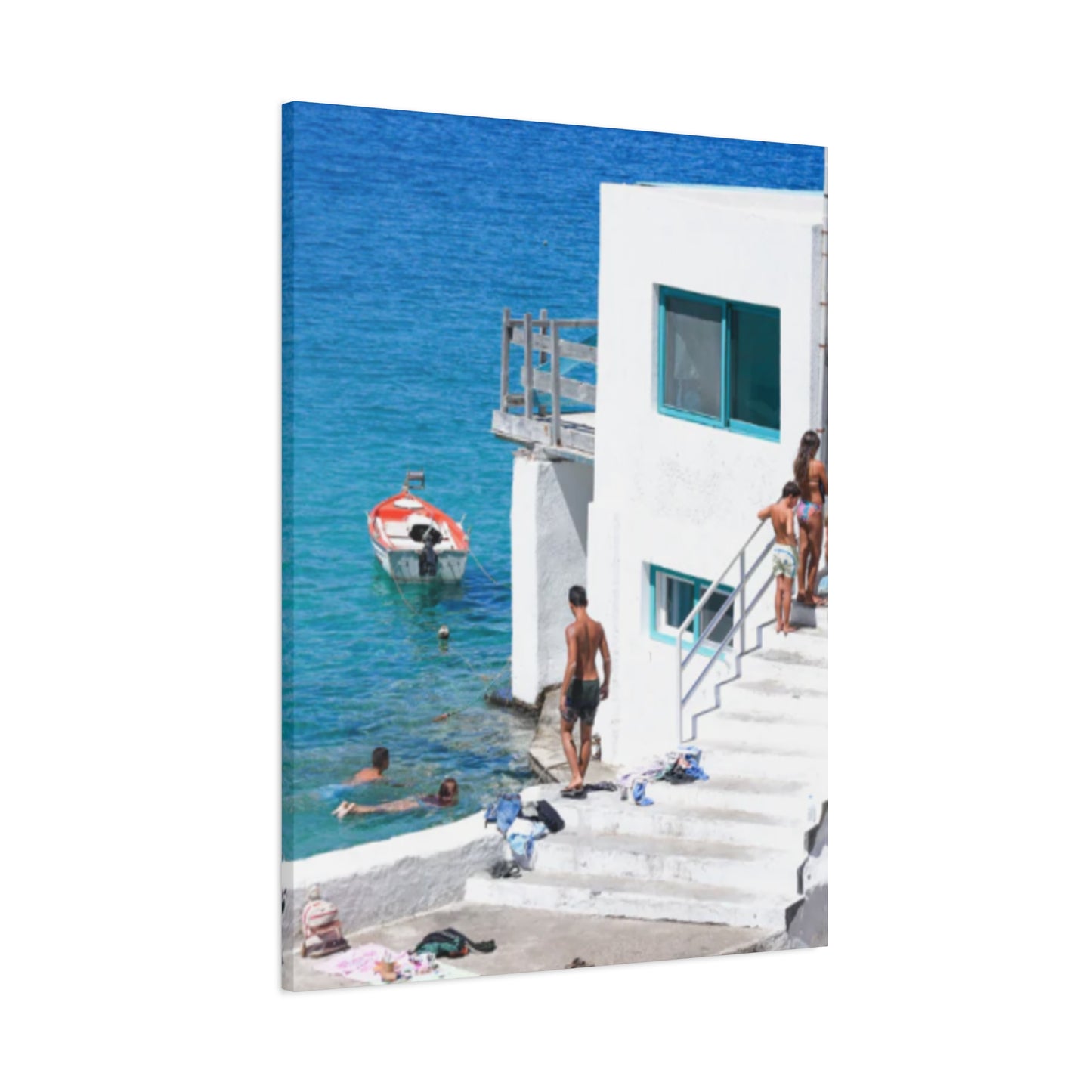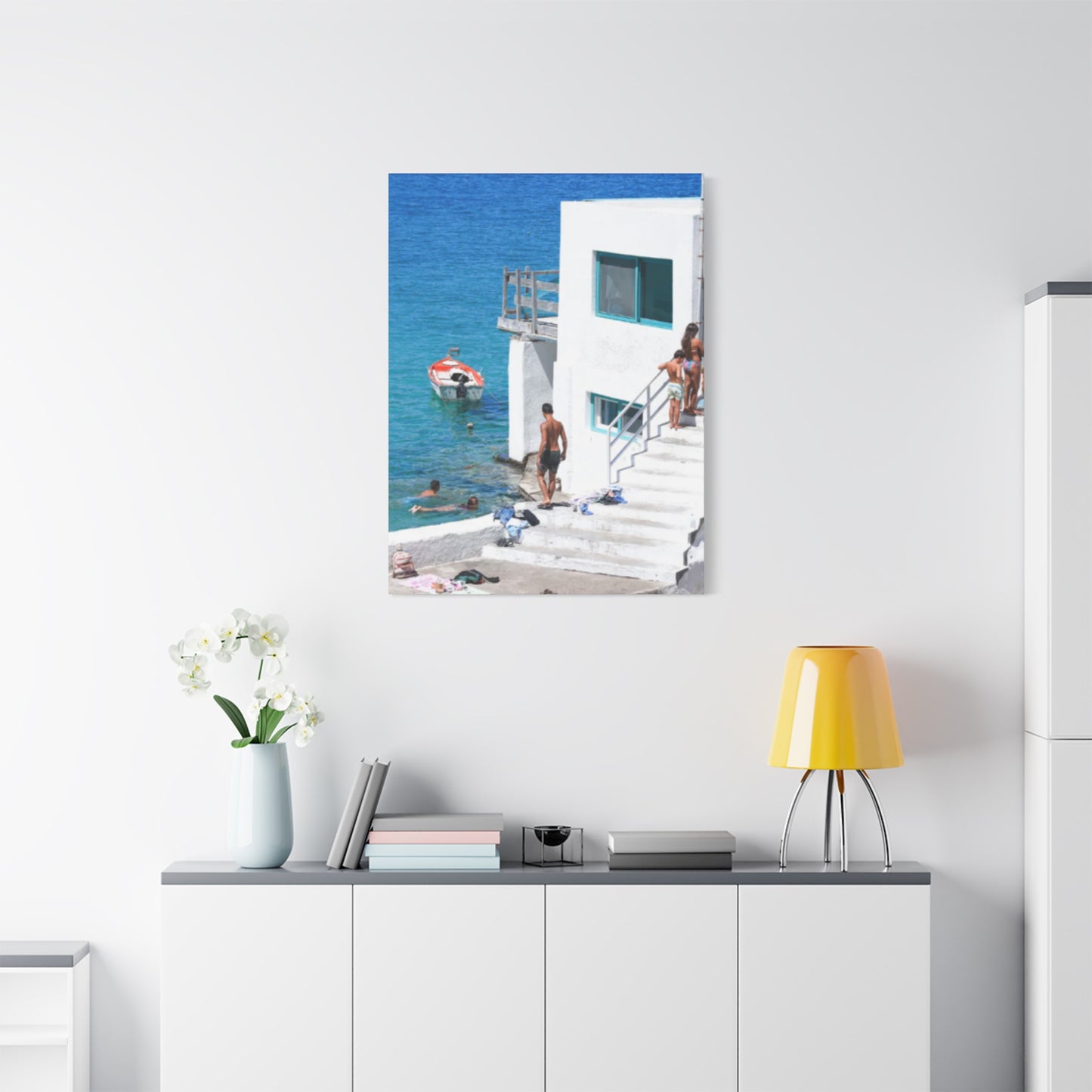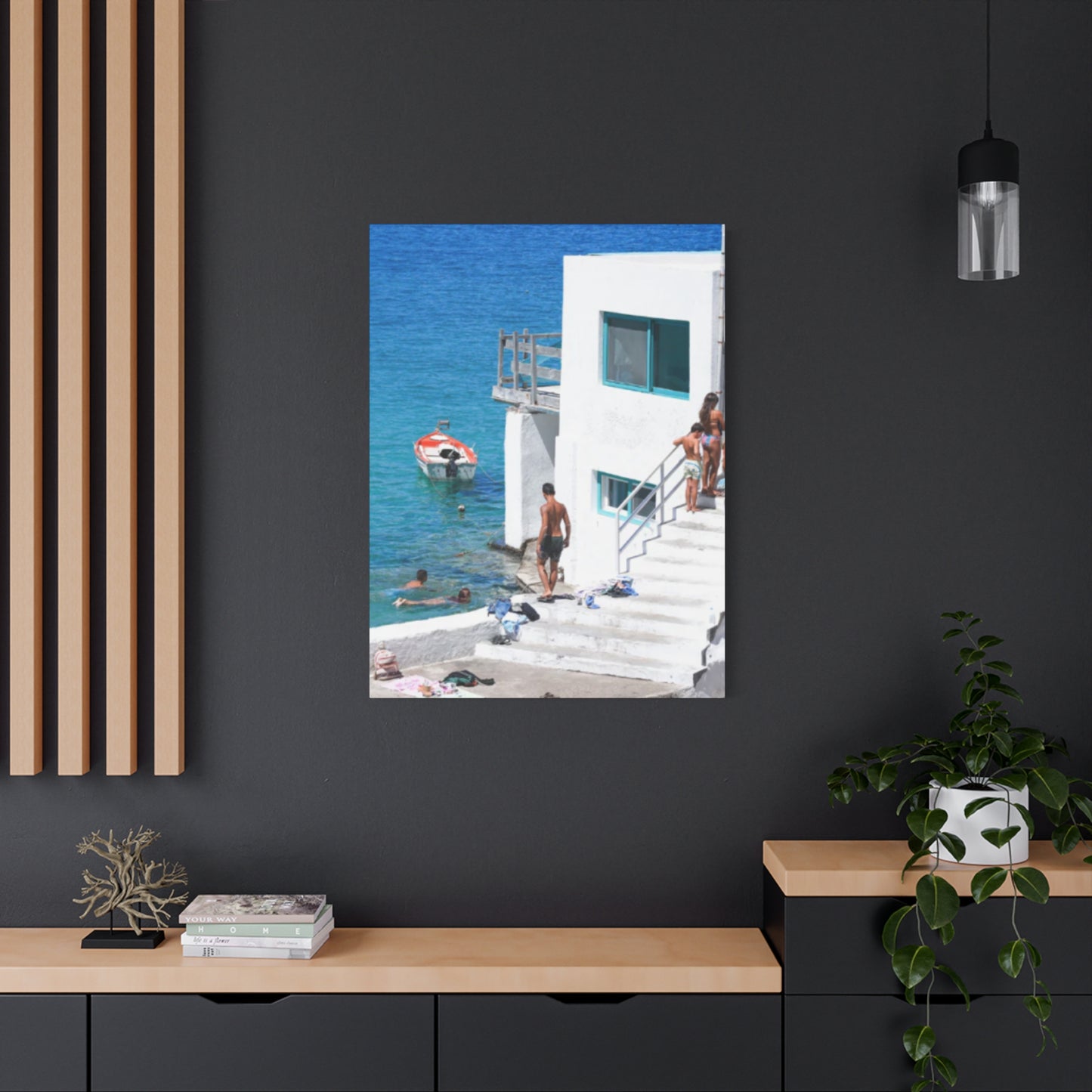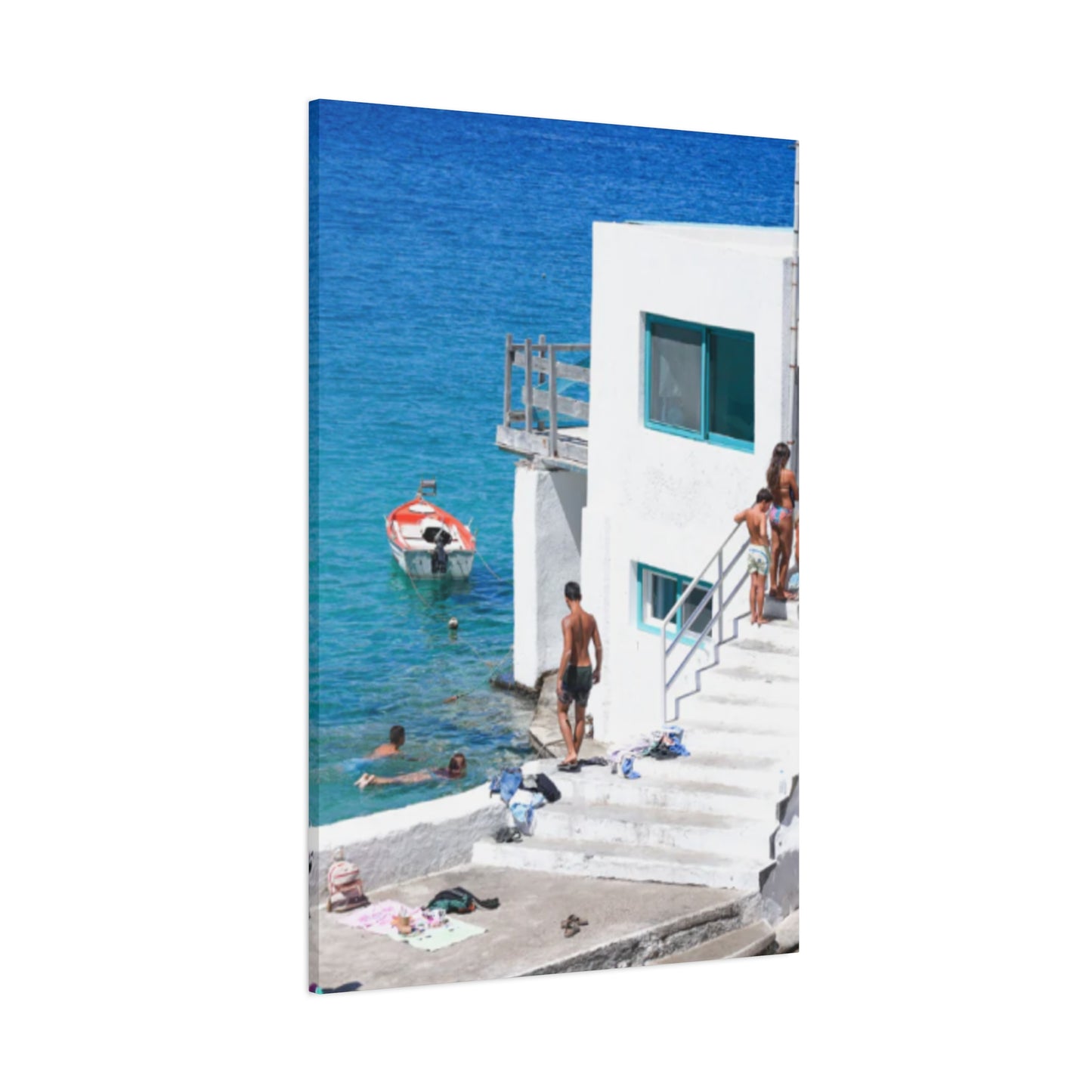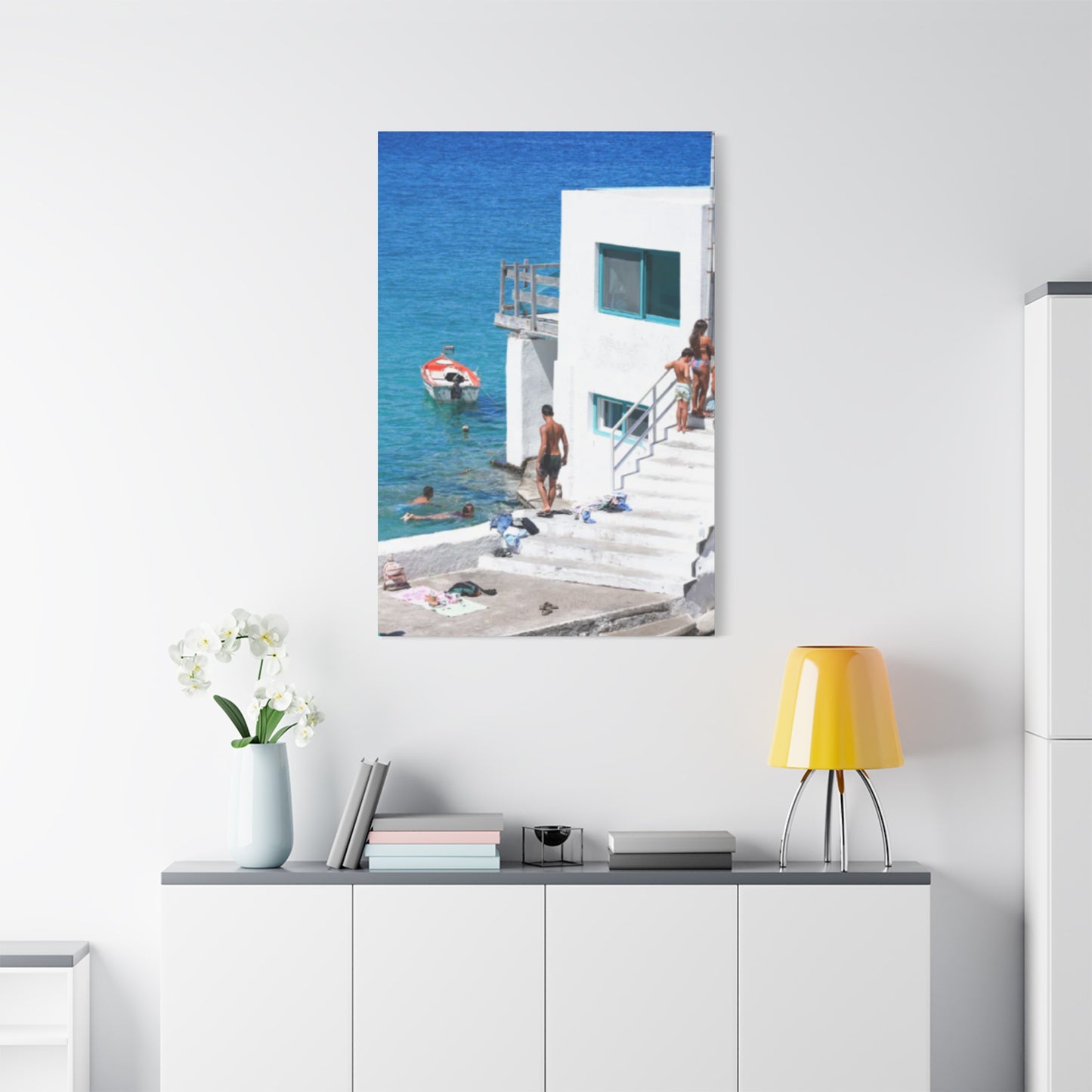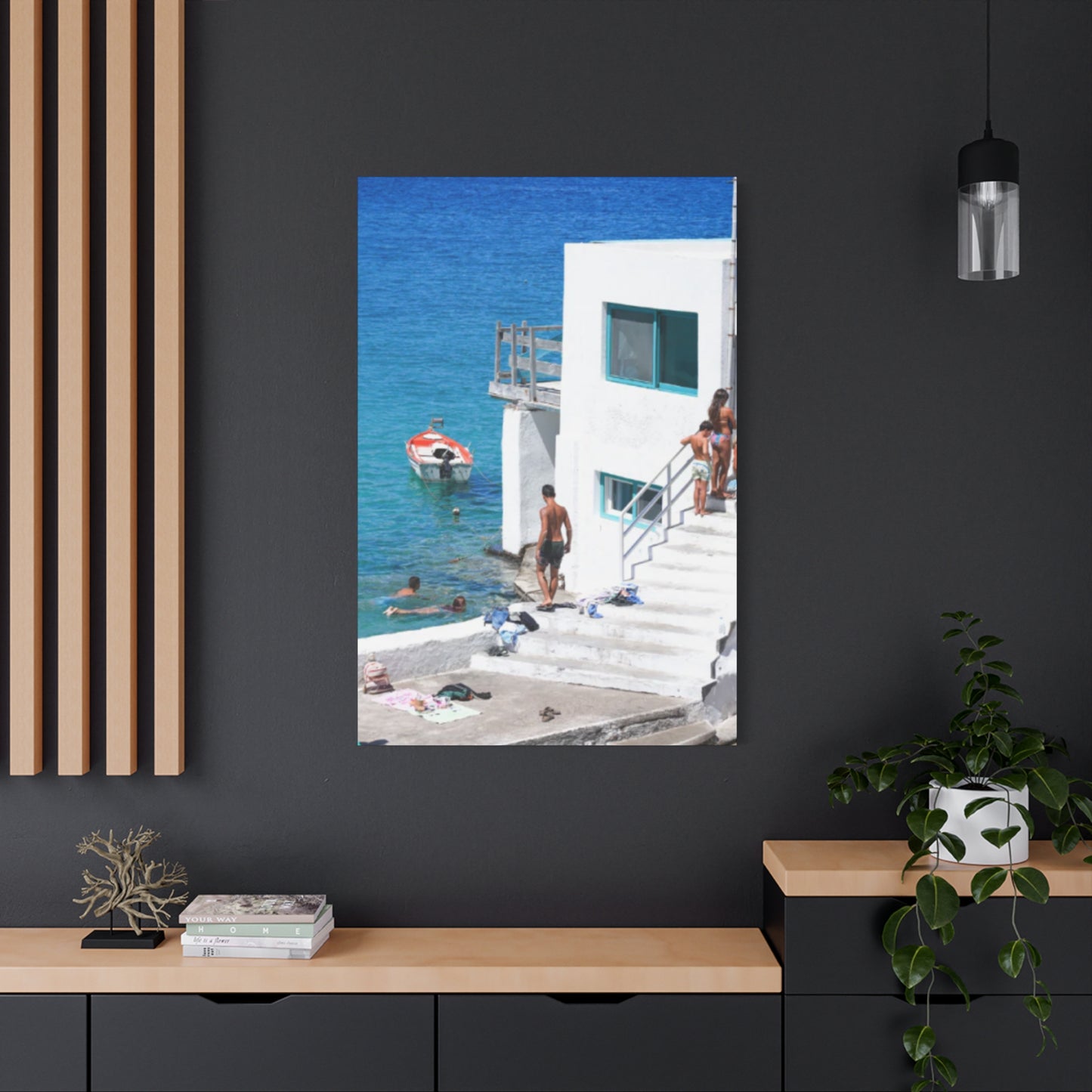Greece Photography Wall Art: Capturing Hellenic Beauty for Modern Living
Greece, the cradle of Western civilization, offers an endless tapestry of visual splendor that has captivated photographers and art enthusiasts for generations. From the azure waters of the Aegean Sea to the weathered columns of ancient temples, Greek landscapes and architecture provide a rich foundation for creating stunning wall art that transforms any living environment. The timeless beauty of this Mediterranean paradise continues to inspire contemporary homeowners seeking to infuse their homes with the romance and majesty of Hellenic culture.
The appeal of Greek photography as wall art extends far beyond mere decoration. These images serve as windows into a world where mythology meets reality, where ancient stones tell stories of gods and heroes, and where the interplay of light and shadow creates natural masterpieces. Whether showcasing the iconic blue and white architecture of Santorini, the rugged coastlines of Crete, or the philosophical grandeur of Athens, Greek photography brings a sense of wanderlust and cultural sophistication to modern homes.
Contemporary collectors and homeowners increasingly recognize the value of authentic photographic art that captures the essence of Greece's diverse landscapes. From intimate village scenes to sweeping panoramic vistas, these photographs offer viewers the opportunity to experience the emotional connection that comes from witnessing one of the world's most photographically rich destinations. The enduring popularity of Greek-themed wall art reflects not only the country's natural beauty but also its profound cultural significance in shaping Western thought and aesthetics.
Authentic Greek Photography Prints for Home Enhancement
The quest for authentic Greek photography prints begins with understanding what distinguishes genuine artistic captures from typical tourist snapshots. Authentic Greek photography goes beyond surface-level beauty to capture the soul of the Hellenic experience. These prints showcase the photographer's deep connection with Greek culture, demonstrating patience in waiting for perfect lighting conditions and an eye for compositions that reveal the country's multifaceted character.
Professional photographers specializing in Greek subjects often spend months or even years developing relationships with local communities, gaining access to hidden locations and intimate moments that casual visitors never witness. This investment in authentic cultural exchange translates into photography that resonates with viewers on multiple levels, offering both visual appeal and emotional depth. The resulting prints serve as conversation starters that invite viewers to explore their own connections to Greek history and culture.
Quality authentic prints require careful attention to color reproduction and printing techniques that honor the original photographer's vision. The Mediterranean light that makes Greek photography so compelling can be challenging to reproduce accurately, requiring sophisticated printing processes and high-quality materials. Professional-grade prints on archival paper or canvas ensure that the vibrant blues of Greek skies and the warm golden tones of ancient stone are preserved for generations.
When selecting authentic Greek photography prints, buyers should consider the photographer's credentials and artistic approach. Established photographers often provide detailed information about their techniques, locations, and the stories behind specific images. This transparency adds value to the purchase and helps buyers understand the artistic vision behind each piece. Additionally, limited edition prints often come with certificates of authenticity that document the print run and verify the image's provenance.
The market for authentic Greek photography has expanded significantly with the rise of online galleries and direct-to-consumer sales platforms. This accessibility allows buyers to discover emerging photographers alongside established names in travel and landscape photography. Many photographers now offer detailed descriptions of their work, including technical specifications, location information, and personal anecdotes that enrich the buyer's connection to the artwork.
Collecting authentic Greek photography prints also supports the broader artistic community and promotes cultural appreciation. By investing in original work, buyers contribute to the livelihoods of artists who dedicate themselves to documenting and celebrating Greek culture. This support enables photographers to continue their work and develop new projects that expand our visual understanding of this remarkable country.
Monochrome Greek Photography Art Applications
Black and white Greek photography offers a timeless aesthetic that emphasizes form, texture, and emotional impact over color relationships. This artistic approach strips away the distraction of Greece's famously vivid colors to reveal the underlying structural beauty and dramatic contrasts that define the landscape. Monochrome treatments can transform familiar Greek scenes into powerful artistic statements that work seamlessly with a variety of decorating schemes.
The absence of color in black and white photography forces viewers to engage more deeply with compositional elements such as line, shape, and texture. Ancient Greek architecture, with its emphasis on mathematical proportions and geometric forms, translates exceptionally well to monochrome treatment. The interplay between light and shadow becomes more pronounced, highlighting the sculptural qualities of columns, pediments, and weathered stone surfaces.
Monochrome Greek photography particularly excels at capturing the human element within these historic environments. Street photography in black and white can reveal the timeless quality of daily life in Greek communities, where traditional activities continue against backdrops that have remained largely unchanged for centuries. The absence of color helps merge past and present, creating images that could have been captured decades ago or yesterday.
The technical aspects of creating compelling black and white Greek photography require careful consideration of tonal relationships and contrast management. Greek light can be intensely bright, creating challenging exposure situations that demand sophisticated understanding of how colors translate to grayscale values. Professional photographers often use specialized filters and post-processing techniques to achieve the desired tonal balance and emotional impact.
When incorporating black and white Greek photography into home environments, these prints offer exceptional versatility in complementing existing color schemes. Unlike color photography that may clash with certain paint colors or furnishings, monochrome images work harmoniously with virtually any palette. This flexibility makes black and white Greek photography an excellent choice for buyers who anticipate changing their room aesthetics over time.
The emotional impact of black and white Greek photography often surpasses that of color versions of the same subjects. The simplified tonal palette encourages contemplation and allows viewers to project their own emotional responses onto the images. This quality makes monochrome Greek photography particularly effective in creating meditative environments or adding sophisticated artistic elements to professional settings.
Printing considerations for black and white Greek photography require attention to paper selection and tonal reproduction. Different paper surfaces can dramatically affect the final appearance of monochrome images, with matte papers offering subtle tonal gradations and glossy surfaces providing maximum contrast and detail. Professional printers often recommend specific paper types based on the characteristics of individual images and the intended display environment.
Iconic Greek Landmarks Through Photographic Lens
Greek landmarks represent some of the most photographed subjects in the world, yet skilled photographers continue to find fresh perspectives and innovative approaches to these familiar monuments. The challenge lies not in avoiding clichéd compositions but in revealing new aspects of these ancient structures through creative use of light, perspective, and timing. Professional photographers develop unique relationships with these landmarks that allow them to capture moments of unexpected beauty and emotional resonance.
The Acropolis of Athens stands as perhaps the most iconic Greek landmark, yet its photographic potential extends far beyond standard postcard views. Photographers who invest time in studying this ancient citadel discover countless opportunities for creative interpretation. Early morning light can transform the Parthenon into a golden beacon above the modern city, while dramatic storm clouds create powerful contrasts between ancient permanence and natural forces.
Santorini's distinctive architecture offers photographers rich opportunities to explore the relationship between natural and built environments. The island's cliff-top villages, with their characteristic blue domes and whitewashed walls, create compelling compositions when photographed against the volcanic landscape and endless sea horizons. Skilled photographers learn to use these elements as complementary components rather than competing focal points.
Delphi, once considered the center of the ancient world, presents photographers with opportunities to explore themes of mystery and spiritual significance. The interplay between ancient ruins and the dramatic mountain landscape creates compositions that speak to humanity's eternal search for meaning and connection with the divine. Photographers often wait for specific lighting conditions that enhance the site's mystical atmosphere.
The monasteries of Meteora offer some of the most spectacular photographic opportunities in Greece, combining architectural achievement with natural wonder. These medieval structures, perched impossibly on towering rock formations, challenge photographers to capture both the human determination that built them and the natural forces that shaped their foundations. The changing light throughout the day creates constantly evolving photographic possibilities.
Rhodes, with its well-preserved medieval city and ancient ruins, provides photographers with opportunities to explore themes of cultural layering and historical continuity. The island's diverse architectural heritage, from ancient Greek temples to Ottoman-era buildings, offers rich material for photographers interested in documenting the complex evolution of Mediterranean civilization.
When photographing Greek landmarks, professionals often emphasize the importance of patience and multiple visits. These sites reveal different characteristics under varying atmospheric conditions, and truly compelling photographs often result from returning to the same location repeatedly until all elements align perfectly. This dedication to craft distinguishes professional architectural photography from casual documentation.
Coastal Vistas: Greek Photography for Wall Display
Greece's extensive coastline provides an inexhaustible source of photographic inspiration, offering everything from intimate cove scenes to dramatic clifftop panoramas. Coastal photography from Greece captures not only the physical beauty of the Mediterranean landscape but also the lifestyle and cultural traditions that have developed around the relationship between land and sea. These images bring the relaxing energy of Greek coastal life into home environments, creating focal points that invite contemplation and escape.
The Aegean Sea, dotted with countless islands and blessed with consistently clear waters, provides photographers with opportunities to explore themes of isolation, connection, and natural beauty. Each island presents unique characteristics that influence photographic approach, from the volcanic drama of Santorini to the lush green landscapes of Corfu. Professional photographers learn to adapt their techniques to capture the distinctive personality of each coastal location.
Lighting conditions along Greek coastlines change dramatically throughout the day, creating opportunities for photographers to capture the same locations with completely different emotional impacts. The famous "golden hour" light that occurs shortly after sunrise and before sunset transforms ordinary coastal scenes into magical compositions. Many professional photographers plan their shoots specifically around these optimal lighting conditions.
The human element adds crucial narrative depth to Greek coastal photography. Fishing boats, beach activities, and waterfront tavernas provide opportunities to document the ongoing relationship between Greek communities and their maritime heritage. These images often resonate more deeply with viewers than pure landscape photography because they suggest stories and invite emotional connection.
Technical considerations for coastal photography in Greece include managing the intense reflections from water surfaces and dealing with the high contrast between bright skies and darker land masses. Professional photographers employ various techniques, including graduated neutral density filters and HDR processing, to capture the full dynamic range of these challenging lighting situations while maintaining natural-looking results.
The printing and display of Greek coastal photography requires careful attention to color reproduction, particularly the accurate rendering of the various blue tones that characterize Mediterranean waters. Professional printing services that specialize in landscape photography understand the importance of calibrated color management systems that ensure the final prints accurately reflect the photographer's original vision.
When selecting coastal Greek photography for wall display, buyers should consider the emotional atmosphere they wish to create. Dramatic storm scenes can add energy and movement to a room, while calm sunset images promote relaxation and contemplation. The scale of the print also affects its impact, with larger formats better suited to capturing the expansive feeling of coastal panoramas.
Blending Contemporary and Traditional Greek Photography
The juxtaposition of modern and traditional elements in Greek photography creates compelling visual narratives that speak to the country's ongoing evolution while honoring its ancient heritage. This approach to photography requires sensitivity to cultural nuances and an understanding of how contemporary life in Greece continues to reflect historical influences. Successful photographers in this genre develop an eye for moments where past and present intersect naturally.
Greek street photography particularly excels at capturing these temporal intersections. Modern Greeks going about their daily activities against backdrops of ancient monuments create powerful compositions that speak to cultural continuity. A businessman checking his smartphone while walking past a 2,500-year-old temple embodies the timeless human experience while highlighting the adaptability of Greek culture.
Architecture photography in Greece offers rich opportunities to explore the dialogue between old and new construction methods and aesthetic approaches. Contemporary Greek architects often incorporate traditional design elements into modern buildings, creating structures that honor historical precedents while meeting current functional requirements. Photographers who understand both architectural history and contemporary design can create images that celebrate this ongoing cultural conversation.
The challenge in combining modern and traditional elements lies in avoiding heavy-handed symbolism that might appear contrived or superficial. The most successful photographs in this genre capture genuine moments where these temporal layers exist naturally within the same frame. This requires patience, cultural knowledge, and the ability to anticipate moments when all compositional elements align effectively.
Color relationships become particularly important when photographing modern and traditional elements together. The warm tones of ancient stone often contrast beautifully with the cooler tones of modern materials like glass and steel. Skilled photographers learn to use these color relationships to guide viewer attention and create visual harmony between disparate architectural elements.
The human element serves as a crucial connecting thread between modern and traditional components in Greek photography. People naturally bridge temporal gaps, and their presence in photographs helps viewers understand the living, breathing nature of Greek culture rather than seeing it as a museum exhibit. This approach creates more engaging and emotionally resonant artwork.
Post-processing techniques for modern and traditional Greek photography require careful balance to ensure that neither temporal element overwhelms the other. Professional photographers often use selective adjustment techniques to enhance the natural relationships between these elements rather than forcing artificial connections. The goal is to reveal inherent harmonies rather than create them artificially.
Greek Urban Photography: Capturing City Rhythms
Greek cities offer photographers rich opportunities to document the vibrant energy of contemporary Mediterranean urban life while capturing the historical layers that make these communities unique. Urban photography in Greece requires an understanding of local customs, daily rhythms, and the social dynamics that shape public interactions. The most compelling urban Greek photography captures the authentic spirit of city life rather than focusing solely on tourist attractions.
Athens, as Greece's capital and largest city, provides countless opportunities for urban photography that ranges from street scenes to architectural studies. The city's complex history is visible everywhere, with ancient ruins integrated into modern neighborhoods and contemporary street art adorning ancient walls. Photographers who spend time in Athens learn to see beyond the surface chaos to discover the underlying patterns that organize urban Greek life.
Thessaloniki, Greece's second-largest city, offers a different urban photography experience with its strong Byzantine heritage and vibrant cultural scene. The city's waterfront promenade, bustling markets, and historic districts provide diverse subjects for photographers interested in documenting northern Greek urban culture. The city's numerous universities create a youthful energy that contrasts beautifully with its ancient foundations.
Street photography in Greek cities requires cultural sensitivity and respect for privacy while capturing the authentic interactions that define urban life. Greek culture places high value on social connection and public gathering, creating numerous opportunities for photographers to document community life. Markets, cafes, and public squares serve as natural stages where daily dramas unfold.
The architecture of Greek cities reflects centuries of cultural influence and practical adaptation to Mediterranean climate conditions. Urban photographers learn to read these architectural layers as historical documents while appreciating their aesthetic qualities. The interplay between different architectural styles within the same neighborhood creates visual rhythms that skilled photographers can use to organize compelling compositions.
Lighting conditions in Greek cities change dramatically between seasons, creating different photographic opportunities throughout the year. Summer's intense light creates strong shadows and high contrast situations, while winter's softer light allows for more subtle tonal relationships. Professional photographers often return to the same urban locations across different seasons to capture their full photographic potential.
The challenge of urban Greek photography lies in finding fresh perspectives on familiar subjects while respecting the privacy and dignity of the people who call these cities home. This requires building relationships within communities and developing an understanding of appropriate boundaries between documentary photography and personal intrusion.
Sourcing Greek Photography Canvas Prints
The search for high-quality Greek photography canvas prints requires understanding the differences between various printing processes, canvas materials, and finishing techniques that affect both the visual impact and longevity of the final product. Canvas printing has become increasingly popular for photographic art because it provides texture and depth that paper prints cannot achieve while offering durability that makes it suitable for various display environments.
Professional canvas printing services that specialize in photographic reproduction understand the unique requirements of Greek landscape and architectural photography. The intense blues of Mediterranean skies and seas, combined with the warm tones of ancient stone and traditional architecture, require precise color calibration and high-quality ink systems to achieve accurate reproduction. Buyers should seek printing services that offer color-managed workflows and provide sample prints for approval.
The choice of canvas material significantly affects the final appearance of Greek photography prints. Traditional cotton canvas provides a classic texture that complements the timeless subjects common in Greek photography, while synthetic canvases offer greater durability and color stability over time. Some printing services offer specialty canvases with subtle textures that enhance specific types of photographic content.
Stretching and mounting techniques play crucial roles in the long-term appearance and stability of canvas prints. Professional mounting services use acid-free backing materials and appropriate tension systems that prevent sagging or warping over time. The choice between gallery wrap (where the image extends around the edges) and traditional mounting affects both the visual presentation and framing requirements.
Online platforms have democratized access to high-quality canvas printing services, allowing buyers to work directly with specialized printers regardless of geographic location. Many services now offer online proofing systems that allow buyers to review digital mockups before final production. This technology helps ensure that the final product meets expectations and reduces the likelihood of costly reprints.
Limited edition canvas prints often command higher prices but offer exclusivity and potential investment value. When purchasing limited edition Greek photography, buyers should verify the edition size, numbering system, and any certificates of authenticity provided by the artist or publisher. These factors affect both the current value and potential appreciation of the artwork.
The cost of canvas prints varies significantly based on size, printing quality, mounting options, and edition status. Buyers should balance their budget constraints with their quality expectations and intended display duration. Investment in higher-quality printing and mounting often proves cost-effective over time, particularly for larger prints that serve as major decorative elements.
Professional Framing for Greek Photography Wall Art
Proper framing transforms Greek photography from simple prints into sophisticated artistic presentations that enhance both the images and their display environments. The framing process involves multiple decisions about materials, styles, and protective elements that affect the artwork's visual impact, longevity, and integration with surrounding decor. Professional framing for photographic art requires understanding both aesthetic principles and conservation requirements.
Matting decisions significantly influence how viewers perceive Greek photography. The color, texture, and width of matting materials can either enhance or detract from the image's impact. Neutral colors typically work well with Greek photography because they don't compete with the already rich color palette of Mediterranean subjects. Multiple mat layers can add depth and visual interest while providing additional protection for the photograph.
Frame selection should complement both the photographic style and the intended display environment. Traditional Greek architectural photography often benefits from classic frame styles that echo the geometric principles found in ancient Greek design. Contemporary interpretations of Greek subjects might work better with modern frame styles that emphasize clean lines and minimal ornamentation.
Glass or acrylic glazing protects photographs from environmental damage while affecting their visual presentation. Museum-quality glazing options reduce reflections and filter harmful UV light that can cause fading over time. The choice between glass and acrylic involves trade-offs between weight, durability, and optical clarity that should be considered based on the specific display requirements.
Professional framers understand the importance of using acid-free materials throughout the framing process to prevent chemical damage to photographs over time. This includes backing boards, mounting adhesives, and any other materials that come into contact with the artwork. The investment in conservation-quality framing materials pays dividends in terms of artwork longevity.
Custom framing allows for precise fitting and design choices that off-the-shelf frames cannot provide. For Greek photography with unusual dimensions or specific aesthetic requirements, custom framing may be the only way to achieve optimal presentation. Professional framers can also accommodate special requirements such as multiple image presentations or three-dimensional mounting effects.
The cost of professional framing can represent a significant percentage of the total artwork investment, particularly for larger pieces or those requiring specialty materials. Buyers should factor framing costs into their initial budget planning and consider the framing as an integral part of the artwork rather than an optional accessory. Quality framing enhances the perceived value of photographic art and protects the investment over time.
Illumination Techniques in Greek Photography
Light serves as the fundamental element that defines the emotional and visual character of Greek photography. The Mediterranean climate and geographic location create unique lighting conditions that have inspired photographers for generations. Understanding how Greek light behaves throughout the day and across seasons enables photographers to capture images with maximum impact and helps viewers appreciate the technical and artistic skill involved in creating compelling Greek photography.
The quality of light in Greece differs significantly from that found in northern latitudes, with higher sun angles creating more intense illumination and stronger color saturation. This abundance of light allows photographers to work with faster shutter speeds and smaller apertures, enabling sharp images with extensive depth of field. However, the intensity can also create challenging contrast situations that require sophisticated exposure techniques to manage effectively.
Golden hour photography in Greece produces some of the most visually stunning images, as the low sun angle creates warm, directional light that enhances texture and form. Ancient Greek architecture particularly benefits from golden hour illumination, which emphasizes the sculptural qualities of columns and pediments while creating dramatic shadow patterns that add visual interest and depth to compositions.
Blue hour photography offers different opportunities for capturing Greek subjects with a more mysterious and contemplative mood. The brief period after sunset when the sky takes on deep blue tones provides excellent conditions for photographing illuminated monuments and coastal scenes. This lighting condition requires precise timing and technical expertise to balance artificial lighting with natural twilight illumination.
Harsh midday light, often avoided by photographers in other locations, can be used creatively in Greek photography to emphasize the intense, Mediterranean character of the landscape. Strong shadows and high contrast can add drama to architectural subjects and create bold, graphic compositions that capture the bright, energetic feeling of Greek summers.
Overcast conditions, while less common in Greece, provide opportunities for different types of photography that emphasize color saturation and eliminate harsh shadows. These conditions work particularly well for detailed architectural photography and intimate landscape scenes where even lighting helps reveal subtle textures and color relationships.
Professional photographers working in Greece often carry specialized equipment to manage challenging lighting conditions. Graduated neutral density filters help balance exposure between bright skies and darker foregrounds, while polarizing filters reduce reflections from water surfaces and enhance color saturation. Understanding when and how to use these tools distinguishes professional work from casual photography.
Greek Photography as Wanderlust Inspiration
Photography has the unique power to transport viewers to distant places and inspire future travel experiences. Greek photography serves as particularly effective wanderlust inspiration because it captures not only the visual beauty of the country but also the lifestyle and cultural experiences that await potential visitors. These images function as more than decoration; they serve as motivation for future adventures and reminders of the transformative power of travel.
The emotional connection that viewers develop with Greek photography often stems from the images' ability to suggest experiences beyond simple sightseeing. A photograph of a taverna terrace overlooking the sea doesn't just show a pretty view; it suggests the pleasure of leisurely meals, the warmth of Greek hospitality, and the relaxed pace of Mediterranean life. These experiential suggestions make the photography more personally meaningful to viewers.
Greek island photography particularly excels at inspiring wanderlust because islands represent escape from routine and the possibility of discovering hidden paradises. Images of secluded beaches, charming fishing villages, and dramatic clifftop views tap into fundamental human desires for exploration and discovery. The sense of isolation and pristine beauty conveyed in these photographs appeals to viewers seeking respite from busy modern life.
Archaeological and historical photography from Greece appeals to viewers interested in cultural exploration and educational travel. Images of ancient theaters, temples, and archaeological sites suggest the intellectual rewards of visiting places where Western civilization took root. These photographs inspire travel that combines leisure with learning and personal enrichment.
Lifestyle photography that captures contemporary Greek culture helps viewers understand that Greece offers modern amenities alongside historical attractions. Images of vibrant markets, contemporary art galleries, and modern hotels reassure potential travelers that visiting Greece doesn't require sacrificing comfort or convenience. This balance between authentic culture and modern accessibility makes Greek travel appealing to broader audiences.
The seasonal variety captured in Greek photography helps viewers understand the country's year-round appeal. Spring wildflower displays, summer beach scenes, autumn harvest activities, and winter mountain landscapes demonstrate that Greece offers different experiences throughout the year. This seasonal diversity extends the country's appeal beyond traditional summer vacation patterns.
Social media has amplified the wanderlust-inspiring power of Greek photography, with images shared on platforms like Instagram reaching global audiences and inspiring viral travel trends. Professional photographers increasingly consider the social media potential of their work, creating images that not only stand alone as art but also inspire sharing and discussion about Greek travel experiences.
Large-Format Greek Photography Prints
Large-scale photographic prints create dramatic focal points that transform room environments and provide immersive viewing experiences that smaller formats cannot achieve. Greek photography, with its sweeping landscapes and monumental architecture, translates particularly well to large format presentation. These substantial prints require careful consideration of technical, aesthetic, and practical factors to achieve maximum impact while maintaining image quality and structural integrity.
The technical challenges of producing large-format Greek photography prints begin with ensuring adequate image resolution and quality in the original capture. Professional photographers working on projects intended for large-scale printing often use high-resolution camera systems or medium format equipment that captures sufficient detail to support dramatic enlargement without quality degradation. The intensive Greek light and high contrast conditions demand particularly careful exposure and post-processing techniques.
Color management becomes increasingly critical as print sizes increase because color shifts and inaccuracies become more apparent in large formats. Professional printing services specializing in large-format photography maintain calibrated workflow systems that ensure color accuracy from original capture through final print production. The intense blues and warm earth tones characteristic of Greek photography require particularly precise color reproduction to maintain their visual impact.
Paper and substrate selection significantly affects both the visual character and practical considerations of large-format prints. Traditional photographic papers may require mounting and framing systems that become unwieldy at very large sizes, while newer materials like metal prints or acrylic-mounted photographs offer durability advantages for large installations. Each substrate choice affects color reproduction, surface texture, and viewing characteristics.
Mounting and installation considerations become increasingly complex as print sizes increase. Large-format prints require robust support systems that can handle their weight while maintaining flat, stable presentation over time. Professional installation often becomes necessary for very large pieces, particularly those intended for commercial or public display environments.
The viewing distance and room size significantly influence the optimal dimensions for large-format Greek photography. Prints that appear perfectly scaled in a photography studio may overwhelm smaller residential rooms or appear underwhelming in large commercial locations. Buyers should carefully consider their intended display environment when selecting print dimensions.
Cost considerations for large-format printing include not only the increased material and printing costs but also shipping, framing, and installation expenses that can add significantly to the total investment. However, the visual impact and presence of large-format Greek photography often justify these additional costs for buyers seeking dramatic decorative elements or investment-quality artwork.
Abstract Interpretations in Greek Photography
Abstract photography approaches Greek subjects by emphasizing visual elements like color, texture, form, and pattern rather than literal representation of recognizable landmarks or scenes. This artistic approach reveals aspects of Greek landscapes and architecture that conventional documentary photography might overlook, creating images that function as pure visual art while maintaining connection to their Greek origins.
Architectural abstraction in Greek photography often focuses on the geometric relationships and mathematical principles underlying ancient Greek design. Close-up studies of column details, shadow patterns, and structural intersections create compositions that celebrate the aesthetic principles that continue to influence contemporary architecture. These images appeal to viewers interested in design and mathematical beauty regardless of their knowledge of Greek history.
Color abstraction draws from the distinctive Mediterranean palette to create images that capture the emotional essence of Greek landscapes without depicting specific locations. The interplay between the blues of sky and sea, the whites of traditional architecture, and the golden tones of sunlit stone provides rich material for photographers interested in exploring pure color relationships.
Texture studies of weathered stone, worn wooden surfaces, and natural formations create tactile images that invite close examination and contemplation. These photographs reveal the passage of time and the effects of Mediterranean climate conditions on both natural and human-made surfaces. The resulting images often possess meditative qualities that make them suitable for environments where contemplation and relaxation are priorities.
Motion blur techniques applied to Greek subjects can create dynamic abstract images that capture the energy and movement within seemingly static environments. Water movement, cloud formations, and even tourist activity can be transformed into abstract compositions through creative use of shutter speed and camera movement. These techniques create images that suggest rather than literally depict their Greek origins.
Multiple exposure techniques allow photographers to layer different aspects of Greek subjects into complex abstract compositions. Ancient ruins might be combined with contemporary elements or natural textures to create images that speak to the layered nature of Greek culture and history. These techniques require careful planning and technical expertise to achieve coherent artistic results.
The market for abstract Greek photography appeals to buyers seeking sophisticated artwork that complements contemporary decor while maintaining cultural connection. These images work particularly well in modern environments where literal landscape photography might appear out of place. The abstract approach allows Greek photography to function in a wider range of decorative contexts while maintaining its cultural authenticity.
Professional Environment Applications for Greek Photography
Greek photography finds increasing application in professional environments where the images serve both aesthetic and psychological functions. The cultural sophistication and visual appeal of Greek subjects create positive associations that can enhance business environments while providing employees and visitors with inspiring visual experiences. The selection and presentation of Greek photography in professional contexts requires understanding both design principles and corporate culture considerations.
Healthcare environments benefit from the calming and uplifting qualities of Greek landscape photography. Images of serene coastal scenes, peaceful village squares, and harmonious architectural compositions can help reduce anxiety and create more pleasant experiences for patients and families. The association of Greece with healing traditions dating back to ancient medical practices adds cultural depth to these applications.
Corporate offices increasingly recognize the value of sophisticated artwork in creating positive work environments and conveying organizational values. Greek photography that emphasizes themes like democracy, philosophy, and cultural achievement can reinforce corporate messages about excellence, heritage, and intellectual rigor. The timeless quality of Greek subjects suggests stability and permanence that many organizations wish to project.
Hospitality environments, particularly hotels and restaurants, use Greek photography to create atmospheric experiences that transport guests to Mediterranean settings. These applications require careful coordination between the photography selection and other design elements to create cohesive environments that enhance the guest experience. The photography becomes part of the overall service offering rather than merely decorative elements.
Educational institutions find Greek photography particularly appropriate because of Greece's foundational role in Western education and philosophy. Images that celebrate learning, architectural achievement, and cultural development support educational missions while creating inspiring environments for students and faculty. The association with academic excellence makes Greek photography especially suitable for libraries, lecture halls, and administrative areas.
Legal and financial services firms often select Greek photography that emphasizes themes of justice, democracy, and institutional stability. Images of ancient courts, government buildings, and philosophical settings reinforce professional credibility while creating sophisticated client environments. The historical association with legal and governmental development makes Greek subjects particularly appropriate for these applications.
The technical requirements for professional photography installations often exceed those of residential applications. Factors such as lighting conditions, viewing distances, security considerations, and maintenance requirements influence both the selection of images and their presentation methods. Professional installation and ongoing maintenance become important considerations for ensuring long-term satisfaction with the investment.
Seasonal Greek Views in Photography Collections
Greece's Mediterranean climate creates distinct seasonal characteristics that offer photographers diverse opportunities throughout the year. Seasonal photography collections allow viewers to experience the full cycle of Greek natural beauty while providing decorative flexibility for changing preferences and occasions. Understanding the unique visual characteristics of each season helps both photographers and collectors appreciate the full spectrum of Greek photographic possibilities.
Spring in Greece brings wildflower displays that transform landscapes with brilliant colors and sweet fragrances. Photography from this season captures the country at its most lush and colorful, with poppies, chamomile, and other native flowers creating natural carpets across hillsides and archaeological sites. Spring light tends to be softer than summer illumination, creating ideal conditions for detailed landscape and macro photography.
Summer Greek photography captures the country at its most iconic, with intense blue skies, crystal-clear waters, and brilliant white architecture creating the classic Mediterranean aesthetic. The abundance of light allows for photography that emphasizes contrast and color saturation. Beach scenes, outdoor dining, and festival activities provide rich subject matter that celebrates Greek summer lifestyle and traditions.
Autumn photography reveals Greece's more contemplative character as tourist crowds diminish and local life returns to normal rhythms. The changing light creates different color relationships and atmospheric effects that appeal to photographers interested in more subtle and sophisticated compositions. Harvest activities, preparation for winter, and the golden light of shorter days create intimate and authentic subject matter.
Winter Greek photography challenges common perceptions of the country as an exclusively warm-weather destination. Snow-covered ancient ruins, stormy seascapes, and cozy indoor scenes reveal Greece's full climatic range while creating dramatic and unexpected compositions. Winter light can be particularly beautiful for black and white photography and dramatic landscape work.
Seasonal collections allow homeowners to rotate their displayed artwork throughout the year, creating fresh perspectives on familiar environments. This approach maximizes the investment in photography while preventing visual fatigue that can occur with permanently displayed images. The seasonal rotation also allows for deeper appreciation of individual pieces as they return to prominence in yearly cycles.
Professional photographers increasingly plan multi-season projects that document specific locations across different times of year. These comprehensive approaches reveal the complete character of Greek locations while creating cohesive bodies of work that can be marketed as collections. The resulting images often complement each other in ways that enhance their individual impact.
The technical challenges of seasonal photography vary significantly, from managing intense summer light to working in challenging winter conditions. Professional photographers adapt their equipment and techniques to optimize results for each season's unique conditions while maintaining consistent quality across the collection.
Greek Wildlife Photography Collections
Greece's diverse ecosystems support remarkable wildlife populations that provide rich subject matter for nature photographers. From the marine life of the Mediterranean to the mountain species of the mainland ranges, Greek wildlife photography reveals the country's biological diversity while creating compelling artwork that appeals to nature enthusiasts and conservation supporters.
Marine wildlife photography in Greek waters captures subjects ranging from dolphins and sea turtles to colorful reef fish and octopi. The clear waters around Greek islands provide excellent conditions for underwater photography, though the technical challenges of shooting in marine environments require specialized equipment and expertise. These images often possess both artistic merit and educational value in documenting Mediterranean marine ecosystems.
Bird photography in Greece benefits from the country's position along major migration routes that bring species from Africa, Asia, and northern Europe through Greek territories. Professional wildlife photographers often time their visits to coincide with migration periods when unusual species might be observed and photographed. The resulting images document both resident and visiting species while creating compelling artwork.
Terrestrial wildlife photography captures the mammals, reptiles, and insects that inhabit Greek forests, mountains, and scrublands. From wild boar and deer to various butterfly species and reptiles, these subjects require patience, local knowledge, and appropriate photographic techniques to capture successfully. The resulting images often surprise viewers who may not realize the extent of Greece's wildlife diversity.
Conservation photography uses compelling wildlife images to support environmental protection efforts while creating artwork that raises awareness about threats facing Greek ecosystems. These photographs serve dual purposes as both aesthetic objects and educational tools that promote understanding of conservation challenges and successes.
The technical demands of wildlife photography require specialized equipment and techniques that differ significantly from landscape or architectural photography. Long telephoto lenses, fast autofocus systems, and understanding of animal behavior become essential tools for successful wildlife photographers working in Greek environments.
Ethical considerations in wildlife photography include minimizing disturbance to animals and their habitats while obtaining compelling images. Professional wildlife photographers follow strict guidelines to ensure their activities don't negatively impact the subjects they photograph or interfere with conservation efforts.
Greek Photography as Thoughtful Travel Gifts
Photographic prints from Greece make exceptional gifts for travelers, culture enthusiasts, and anyone with connections to Greek heritage. The thoughtful selection of Greek photography as gifts requires understanding the recipient's interests, aesthetic preferences, and existing collection while choosing images that will provide lasting enjoyment and meaning.
Personal connection enhances the gift value of Greek photography significantly. Images that relate to places the recipient has visited or hopes to visit create emotional resonance that transforms the artwork from mere decoration into treasured mementos. Understanding the recipient's travel experiences and interests helps guide selection toward images with personal significance.
Greek photography gifts work particularly well for milestone occasions such as retirements, anniversaries, or significant birthdays where the recipient might appreciate sophisticated artwork that celebrates cultural achievement and beauty. The timeless quality of Greek subjects makes these gifts appropriate for recipients of various ages and backgrounds.
Educational value adds depth to Greek photography gifts, particularly when accompanied by information about the locations, historical significance, or photographic techniques involved in creating the images. This additional context helps recipients develop deeper appreciation for the artwork while learning about Greek culture and history.
Presentation considerations become important when giving photography as gifts. Professional framing, appropriate packaging, and certificate of authenticity or artist information enhance the perceived value and demonstrate thoughtful preparation. The presentation should match the significance of the occasion and the relationship with the recipient.
Conclusion
Greece photography wall art offers a stunning and contemporary way to bring the timeless beauty of Hellenic landscapes and culture into modern living spaces. Through the lens of skilled photographers, Greece’s iconic whitewashed villages, sun-drenched beaches, ancient ruins, and vibrant street scenes are immortalized, capturing the essence of the Mediterranean’s charm and spirit. Incorporating such photography into your home décor not only elevates the aesthetic appeal but also creates a deep, emotional connection to one of the world’s most captivating regions.
The power of Greece photography wall art lies in its ability to freeze moments of natural and architectural beauty with crisp detail and vivid color. Whether showcasing the dramatic cliffs of Santorini, the serene waters of the Aegean, or the timeless ruins of Athens, these images serve as windows to a culture rich in history, mythology, and breathtaking scenery. They invite viewers to experience Greece’s unique blend of tradition and modernity, making them perfect for enhancing contemporary interiors.
Photography art is also incredibly versatile, fitting effortlessly into various design styles, from minimalist and industrial to coastal and bohemian. The clean lines and realistic textures of photographic prints balance well with modern furnishings, while the vibrant colors of the Greek landscape add warmth and vitality. This flexibility makes Greece photography wall art an excellent choice for living rooms, bedrooms, offices, or even commercial spaces seeking a touch of elegance and wanderlust.
Moreover, investing in Greece photography wall art supports photographers who dedicate their craft to capturing the country’s natural beauty and cultural essence. Their work often tells stories beyond the frame—stories of history, community, and the everyday life that continues to define Greece today. Displaying these images in your home creates an ongoing conversation about place, heritage, and the enduring appeal of Mediterranean living.
In conclusion, Greece photography wall art is a powerful medium for capturing and celebrating Hellenic beauty in a way that complements modern living. It transforms walls into galleries of cultural expression and natural wonder, offering inspiration and serenity in equal measure. Whether you are passionate about travel, history, or simply appreciate exceptional art, this style of wall art makes a timeless and meaningful addition to any home.

















